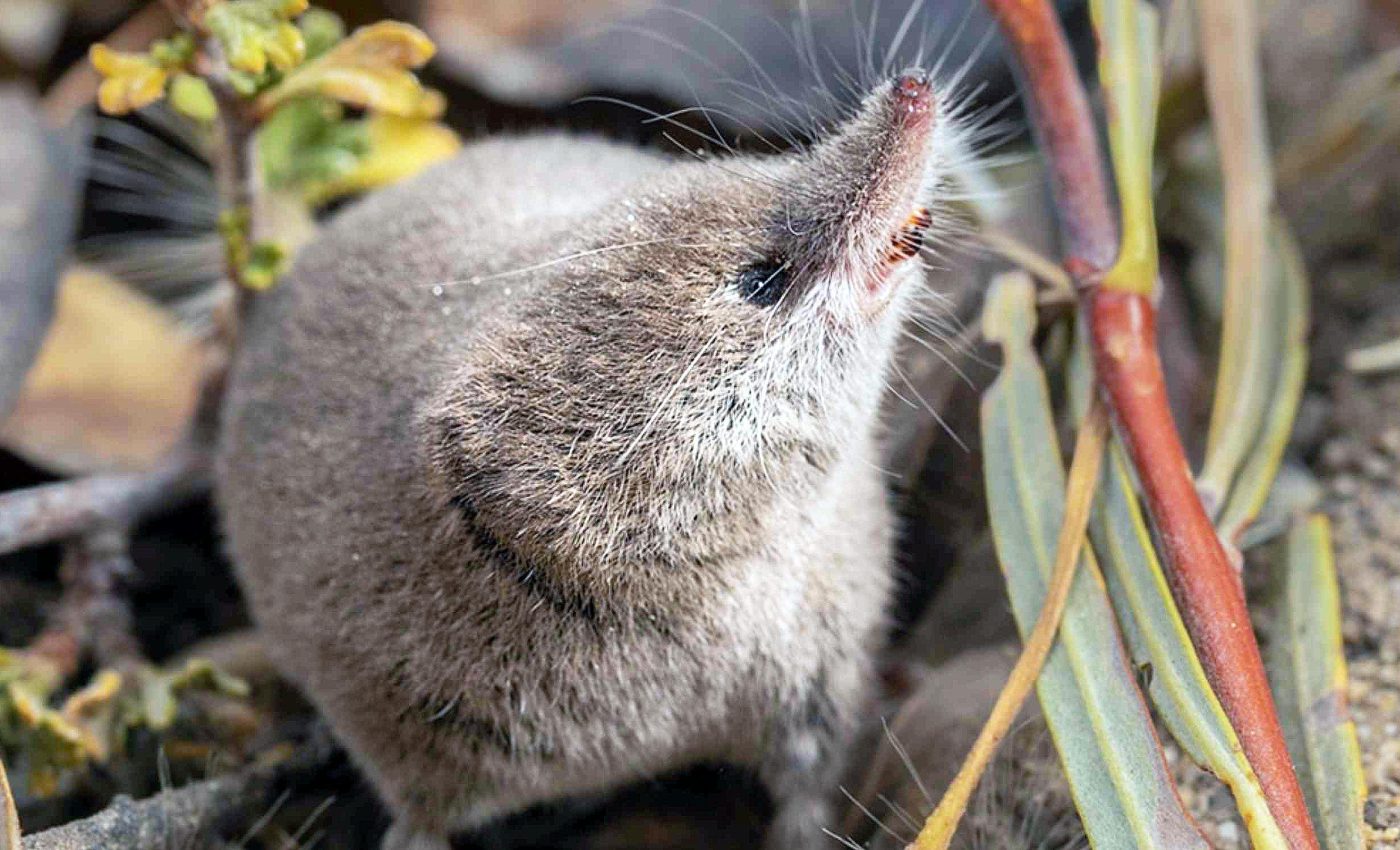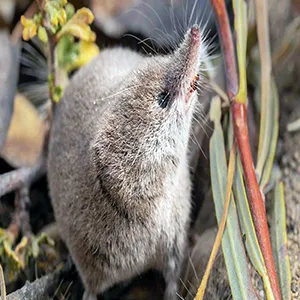
Students photograph an incredibly elusive mammal for the first time ever
Up high in California’s eastern Sierra Nevada, a mammal as light as two paper clips has been hustling under rocks and meadows, escaping every camera for more than a century.
Earlier this winter, three college students strapped snowshoes to their backpacks and shouldered a simple goal: catch the ghost on film.
Their gamble paid off, yielding the first clear portraits of the Mount Lyell shrew and closing the only photographic blind spot in California’s mammal list.
The expedition teamed wildlife photographer Vishal Subramanyan of the California Academy of Sciences with undergraduate naturalists Prakrit Jain from UC Berkeley and Harper Forbes from the University of Arizona.
Mount Lyell shrew in the wild
The trio had set around 150 pitfall traps (plastic cups sunk flush with damp soil, baited with mealworms and cat food) and checked each cup every two hours through freezing nights.
After each session the students disinfected the traps and moved them a few yards to avoid recapturing the same individuals, a low-tech version of mark-recapture that minimized stress.
The shuffle also built a broader map of where Lyell shrews prowl between springs, sedges, and talus edges.
Over the course of three nights the team checked traps until the successful caught the Lyell. They reported measurements of barely 9 to 10 centimeters in length and 2 to 3 grams in weight.
Tissue clips taken from the tip of the tail later confirmed the identity at the California Academy’s genetics lab.
“For every photo that we got in focus, we must have 10 or 20 photos where the shrew is running out of the frame,” admitted Jain after the trip. Although the catch came quickly, the photos did not.
Mount Lyell shrew camera trap
Unlike mice that can handle brief fasting, shrews burn food at a blistering rate, their metabolism requires eating every hour or two.
Leaving one stuck overnight could kill it, so the students slept in two-hour shifts while temperatures slid to 15°F.
That discipline spared all four species of the shrews they caught, an important ethical point because the species is so poorly studied that its maximum lifespan remains unknown.
With each release the students watched the gray blur vanish into grass, confirming the animals were alert and unharmed.
When a trap sprung, they built a miniature studio: a white board for contrast, a terrarium stuffed with leaf litter, and a camera on rapid fire.
The result is an image set that finally places a personality on what was only a skull in museum drawers.
Five Lyell shrews and ten individuals from three related species cycled through this assembly line, each released a few minutes later at its capture spot.
Every animal left with a small mealworm to offset the calorie debt of the impromptu photo shoot.
Why shrews slipped past cameras
Shrews, although superficially mouse-like, belong to their own insect-eating order, and they favor damp tunnels hidden under alpine sedges.
That combination of size, speed, and habitat has kept them invisible to standard wildlife surveys for decades.
Scientists suspect the shrew’s ears cannot detect most camera-trap infrared flashes, so the animals never pause, further explaining the lack of historical images.
Coupled with their habit of tunneling just beneath leaf litter, traditional motion sensors rarely trigger.
The Lyell species pushes secrecy further by occupying a slice of marshy high ground between 7,000 and 10,000 feet where few biologists linger after summer snowfalls.
Previous museum specimens were collected only after the animals drowned in buckets set for other studies.
Photographs change that dynamic, field scientists can now train artificial-intelligence recognition models on real pelage patterns and search camera-trap archives for missed detections, a step impossible without a reference image.
Saving the Mount Lyell shrew
Even with new publicity, the outlook for the Mount Lyell shrew (Sorex lyelli) is tight.
UC Berkeley researchers project the shrew will lose 89 percent of its alpine wetland range by the 2080s if warming continues on its current path.
Modeling by state biologists shows that a 3°F rise in average summer temperature could lift the tree line into the sub-alpine fens the shrew occupies, drying those seeps within a couple of decades. That shift would push the species upslope toward bare granite with nowhere else to migrate.
The state has labeled the animal a “species of special concern,” a tier below endangered but still warranting monitoring.
Because the shrew’s range spans only about 35 square miles, a single wildfire or drought year could erase entire sub-populations.
Conservationists are using the fresh genetic samples to gauge diversity across that range, hoping to pinpoint refuges that stay cool and wet even during dry spells.
Protecting those micro-pockets, they argue, may offer the quickest insurance policy for the shrew and the invertebrates it devours.
Tiny mammal, big message
“Nobody, not even us, really thought this was going to work, especially on our first try,” Subramanyan told a reporter once the images went public. He sees the photos as a recruitment poster for unglamorous wildlife.
Forbes, who studies public engagement, plans to turn their footage into a short video for classrooms, arguing that conservation begins with curiosity.
He says younger viewers often latch onto small, quirky creatures more than majestic megafauna once they learn the role each plays in healthy soils.
Jain adds that hundreds of shrew species around the world sit in the same data void, known only from a single specimen or location.
He hopes the Lyell success nudges more students to chase overlooked creatures before climate curves turn against them.
For now, the animal’s cameo has given scientists a living face to protect and has reminded Californians that even in a state wired with trail cameras, some stories still wait in the shadows.
Image credit: Vishal Subramanyan, Prakrit Jain, and Harper Forbes/University of California, Berkeley
—–
Like what you read? Subscribe to our newsletter for engaging articles, exclusive content, and the latest updates.
Check us out on EarthSnap, a free app brought to you by Eric Ralls and Earth.com.
—–














